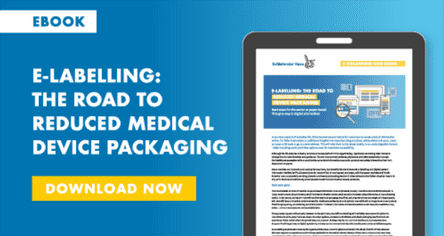Medical writing, medical editing and medical proofreading are performed in a very wide variety of healthcare contexts. Broadly speaking, however, the role of a medical writer is to “ensure that documents comply with regulatory, publication, or other guidelines in terms of content, format, and structure.” [1] In the closely regulated medical device industry, medical writing, editing and proofreading play a crucial role in the safety of devices and the well-being of patients.
If we take a bird’s-eye view of medical writing, we find a number of broad features that distinguish one type from another.
The purpose, target group and context in which a document is read will very much determine features such as style, complexity of content, type of content, and the language used in a medical writing document. Features that also need to be considered are format and structure (for example, a new 510K submission has its own format and templates defining the structure).
Furthermore, the type of distribution media is also an important factor. Will it be distributed online (e.g. e-labeling), as a paper copy or as both? Is it a poster with a visual focus used at a conference or a text-based article published in a specialist magazine?
Medical writing target groups
Medical writing has very many target groups in both regulatory and non-regulatory contexts. Some of the key ones are:
- Healthcare Providers
- Patients
- Regulatory bodies
- Hospitals and other healthcare providers
- Insurance (health or otherwise) stakeholders
- Educational and training institutions
- Internal corporate stakeholders (e.g. within different functions of a pharmaceutical company or medical device manufacturer)
- Visitors to medical- and health-focused websites, or public events
- Industry press
Delving deeper into the different types of medical writing, most professionals agree on several categories that cover the whole range:
Regulatory and clinical documentation
This spans the various types of medical writing documents in research and development, clinical testing, submission, approval, and in the post-approval regulatory environment. Labeling and packaging, and instructions for use are very high-profile examples of this type of medical writing. It includes a hybrid of paper-based and digital (online) labeling.
Medical proofreading can be a very onerous task in this category, as inaccuracies can have drastic consequences for patients, and result in costly litigation for medical device manufacturers.
Educational and Training Materials
Examples are training manuals, slides, posters and other visual aids for various audiences, particularly training for Healthcare Providers. Video and multimedia scripts are other types in this category.
Medical communications
This includes documents such as press releases, white papers, case studies, health articles, marketing brochures, manuscripts, slide decks and posters, general health publications and general health websites. Research articles, reviews and case reports of individual patients are other types.
A Day in the Life of a Medical Writer
Medical writing requires research, flexibility and often working to tough deadlines, especially in medical communications agencies, where multiple projects are the norm.
Joe Russo is a technical writer and information architect at Intuitive Surgical, best known for its da Vinci robotic surgical systems. He describes how a medical writing project might begin with a single 500-page document that he breaks down into single-page modules. These modules are topic-based and worked on by multiple medical writers simultaneously. This, he says, provides the agility the company needs in its process steps. He supports the medical writers with training, tools and output quality steps.
Typically, he will enter the process for producing product information at several points, initially by ensuring the medical writers have all medical device specifications for the document version. Finding synergies and overlaps is important. He looks at ways of re-using existing content from previous versions, as well as what information must be re-used across the different single-page modules. At the output stage, he supports medical writers through medical editing and updating style sheets for any changes that may have been made to a product after the medical writers have set to work. He also gives input on layout, tables and graphics.
Throughout the process, medical writers consult closely with the subject matter experts (SMEs). Product features, for instance, may change along the way. Typically, a project concludes with validation, verification and approval of the document modules. Tools used throughout these steps include standard software such as MS Office, but also Intuitive Surgical’s product lifecycle management system and TVT comparison software from Schlafender Hase® for proofreading and verifying documents. TVT makes the comparison of output incredibly easy, much simpler and much cleaner than other comparison tools, explains Joe Russo.
Tools and resources for medical writers
TVT, along with its modules TVT Artwork®, TVT Spelling® and TVT Barcode®, will compare any two document versions within seconds and highlight deviations in text, artwork and barcodes. Creating custom dictionaries is all possible in TVT, which is useful for the medical proofreading of terminology and corporate-specific nomenclature. It can be easily integrated into any information system, such as a product lifecycle management system. Annotation and report functions bring transparency to workflows.
In terms of online resources, in the American Medical Writers Association (AMWA) has a wealth of information, as does the European Medical Writers Association. Both are an excellent springboard for learning more about medical writing, medical proofreading and editing. Here, you can listen to Joe Russo, in full, talking about his job.
Would you like to find out more about how TVT comparison software can support you as a medical writer? Get in touch with us below.
See https://www.amwa.org for the American Medical Writers Association, and https://www.emwa.org for the European body.






